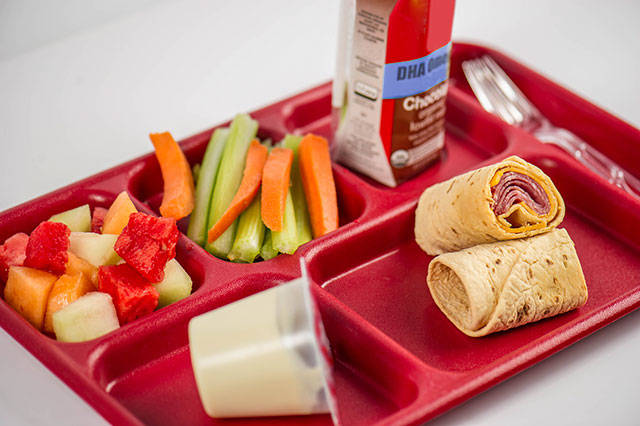Washington public schools play a vital role in children’s health by providing free and reduced-price meals to students in need.
The Office of Superintendent of Public Instruction (OSPI) in a news release Friday encourages families to apply for the programs. OSPI administers three nutrition programs—the National School Lunch Program, the School Breakfast Program, and the Special Milk Program—in partnership with the United States Department of Agriculture (USDA).
The application process for participation in school meal programs is simple and confidential. All households with students enrolled in public K–12 schools receive application packets at the beginning of the school year. Households with incomes below certain levels are encouraged to apply for any or all of the administered programs. The application packet provides instructions and directions on where to send the applications. Application review and determinations are made within 10 operating days of receipt of the application. Households denied eligibility can appeal the decision by contacting their school.
For information about reduced-price meals in the Kent School District, go to kent.k12.wa.us/Page/1424.
Applications can be submitted any time during the school year. Households that experience a change in income mid-year are encouraged to apply.
Students receiving help through Temporary Assistance for Needy Families (TANF) or the Basic Food Program – as well as all other students in the same household – automatically qualify for free meals. The Washington State Department of Social and Health Services (DSHS) provides OSPI with a list of children who receive these services to facilitate automatic eligibility. If a household chooses to decline the free meal benefits after they are notified of their children’s eligibility, they must contact the school.
DSHS also provides OSPI with a list of children participating in certain Medicaid programs. All other students in the household can automatically qualify for free or reduced-price meals and eligibility can be extended.
Children in foster care are also eligible for free meal benefits. Children placed in foster care by DSHS are included in the list provided to OSPI. In households where children in foster care reside, all other students in the household may be eligible for free or reduced-price meals based on household size and income. In these situations, households may submit an application.
Students experiencing homelessness and migrant students, households taking part in Food Distribution Program on Native Reservations, and students in Head Start and the Early Childhood Education and Assistance Program are also eligible for free meals. Parents, guardians, and families should contact their child’s school with questions.
Eligibility lasts from the date of approval up to the first 30 operating days of the next school year or until a family member contacts the school or district.
Households needing assistance with application materials in languages other than English should contact their school for assistance.
The income guidelines are used to determine the eligibility of children to receive free or reduced-price meals or free milk. Washington state pays the cost of lunch for public school students eligible for reduced-price meals in grades K‒3 and the cost of breakfast for public school students eligible for reduced-price meals in grades K‒12.
Free meal eligibility starts at an annual household income of $16,237 for one household member, $21,983 annually for two household members and continues up based on the number of people in the household. Reduced price meals start at $23,107 annually for a household of one, $31,284 for a household of two and continues up based on how many people are in the household.
For more information, parents, guardians, and families should contact their child’s school.
Schools with more than 25 percent of the enrolled K‒4 students qualifying for free or reduced-price meals are required to operate the National School Lunch Program. In addition, schools with more than 40 percent of enrolled students who qualify for free or reduced-price meals are required to operate the School Breakfast Program.



